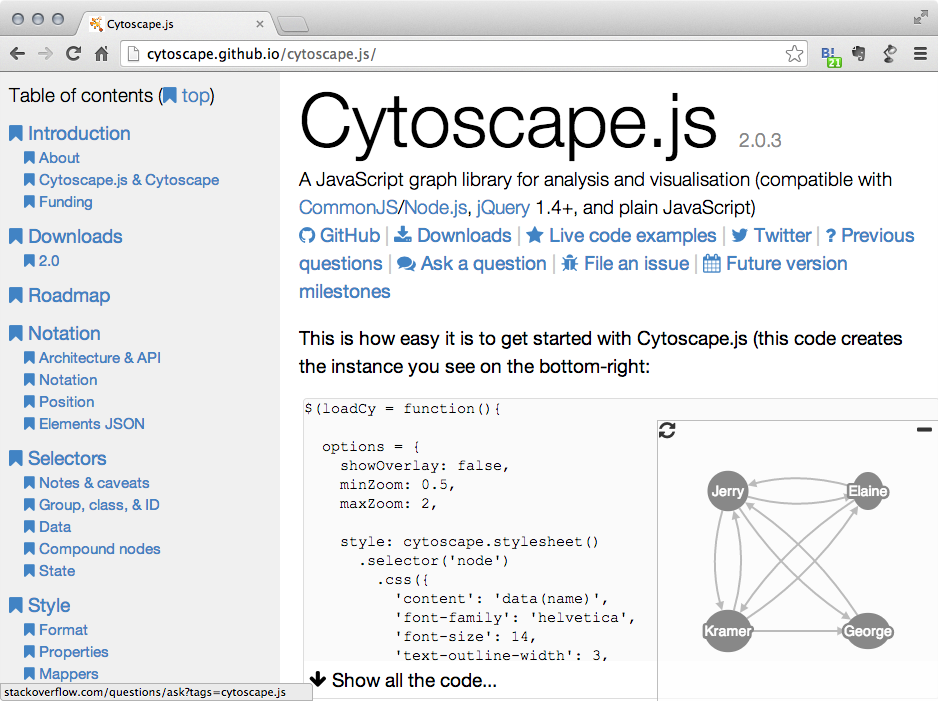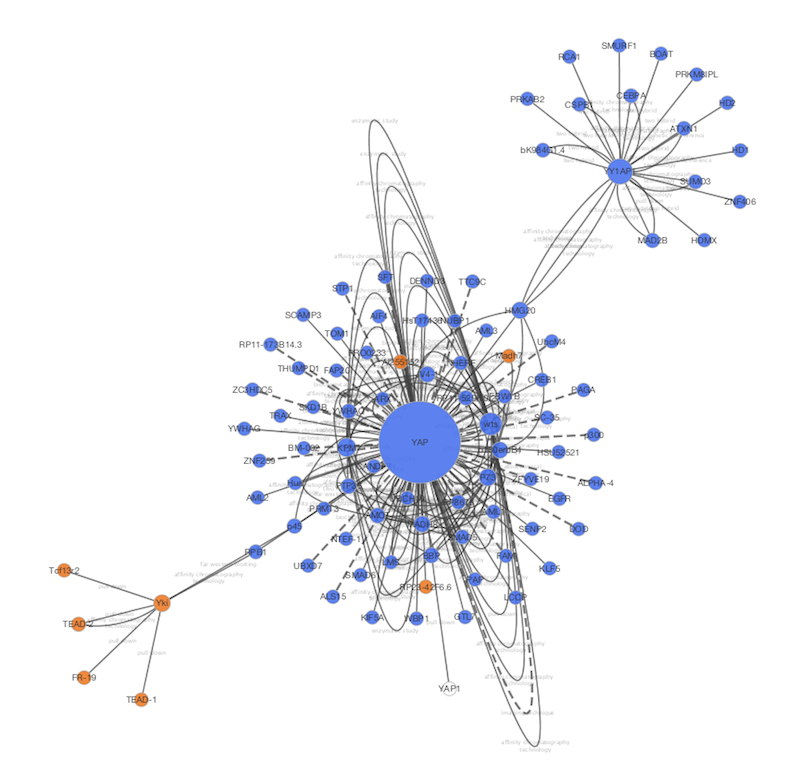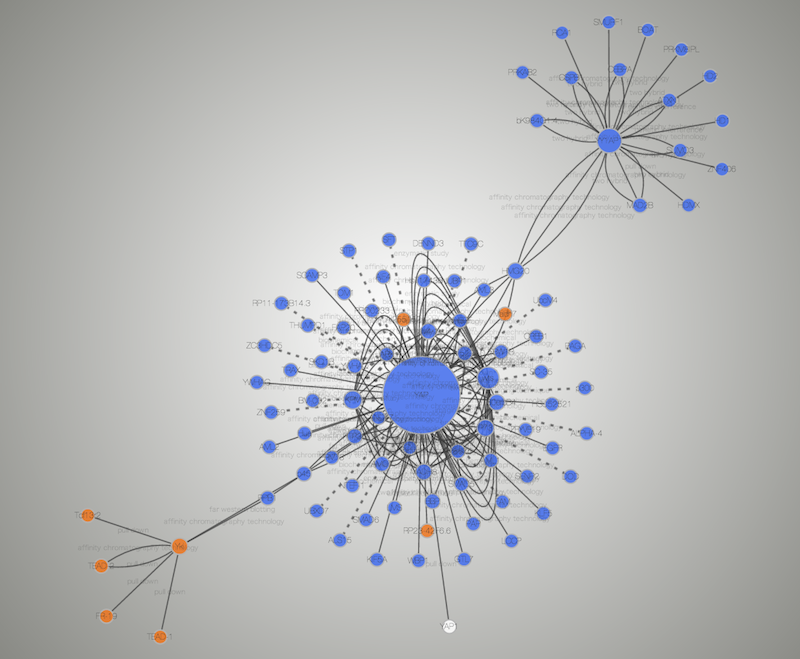25. Cytoscape.js and Cytoscape¶
25.1. What is Cytoscape.js?¶

Cytoscape.js is a JavaScript library for interactive network visualization. It is a building block for web applications and is NOT a complete web application. If you have network data sets and want to share visualizations created with Cytoscape, you can build your own website using Cytoscape.js and this new Export to Cytoscape.js feature.
Examples¶
A network visualized with Cytoscape 3.1.0

Same network exported to Cytoscape.js (Rendered with Google Chrome and Cytoscape.js 2.0.3)

25.2. Data Exchange between Cytoscape and Cytoscape.js¶
Since Cytoscape.js is a JavaScript library, its basic data exchange format is JSON (JavaScript Object Notation). All of these import/export functions are part of standard Cytoscape user interface, and you can read/write Cytoscape.js JSON files just like other standard files such as SIF.
Export Network and Table to Cytoscape.js¶
Cytoscape.js stores network data (graph) and its data table in the same object. Cytoscape writes such data complex as JSON, i.e., both network and data tables will be exported as a single JSON file. You can select a network and export it from File → Export → Network to File… and select Cytoscape.js JSON (*.cyjs) as the file type.
Cytoscape only supports one of the Cytoscape.js supported JSON formats, which is:
{
elements:{
nodes:[],
edges:[]
}
}
SUID will be used as unique identifier for nodes and edges in the JSON. For more information about this format, please visit Cytoscape.js web site.
Important Note about Data Compatibility¶
Cytoscape creates JSON file directly from data table and tries to extract as much data as possible from the original table. However, since table column names will be directly converted into JavaScript variable names, invalid characters will be replaced by underscore (_):
Original Data Table Column Names:
Gene Name KEGG.pathway
The Names above will be replaced to:
Gene_Name KEGG_pathway
You should be careful when you plan to use this feature for data roundtrip: from Cytoscape to Cytoscape.js back to Cytoscape. For such use cases, we strongly recommend to use JavaScript-safe characters only in your table column names. Naming your columns only with alphanumeric characters and underscore (_) is the best practice. (For actual data entries, all characters are allowed. This restriction is only for table column names.)
25.3. Export Styles to Cytoscape.js¶
Cytoscape and Cytoscape.js are sharing a concept called Style. This is a collection of mappings from data point to network property. oCytoscape can export its Styles into CSS-based Cytoscape.js JSON.
You can export all styles into one JSON file from File → Export → Styles to File… and select Style for cytoscape.js (*.json) as its format.
Limitations¶
Cytoscape.js does not support all of Cytoscape Network Properties. Those properties will be ignored or simplified when you export to JSON Style file.
Currently, the following Visual Properties will not be exported to Cytoscape.js JSON:
Custom Graphics and its positions
Edge Bends
Tooltips
Node Label Width
Node Border Line Type
Arrow Colors (they are always same as edge color)
Cytoscape.js and Cytoscape Compatibility¶
Cytoscape’s network rendering system is designed for desktop use, while the browser-based renderer incorporates web technologies (e.g., cytoscape.js and Cascading Style Sheets). As a result, most but not all networks will render the same in the browser as in Cytoscape. Cytoscape visual styles not supported in the web browser are ignored. A complete compatibility list is available here.
Import Cytoscape.js data into Cytoscape¶
Cytoscape.js network JSON files can be loaded from standard Cytoscape file menu: File → Import → Network …. Both File and URL are supported.
25.4. Build Your Own Web Application with Cytoscape.js¶
Although Cytoscape can export networks, tables, and Style as Cytoscape.js-compatible JSON, users have to write some JavaScript code to visualize the data files with Cytoscape.js. Details of web application development with Cytoscape.js is beyond the scope of this document. If you need examples and tutorials about web application development with Cytoscape.js, please visit the following web site:
https://github.com/cytoscape/cyjs-sample/wiki
Questions?¶
If you have questions and comments about web application development with Cytoscape and Cytoscape.js, please send yours to our mailing list.